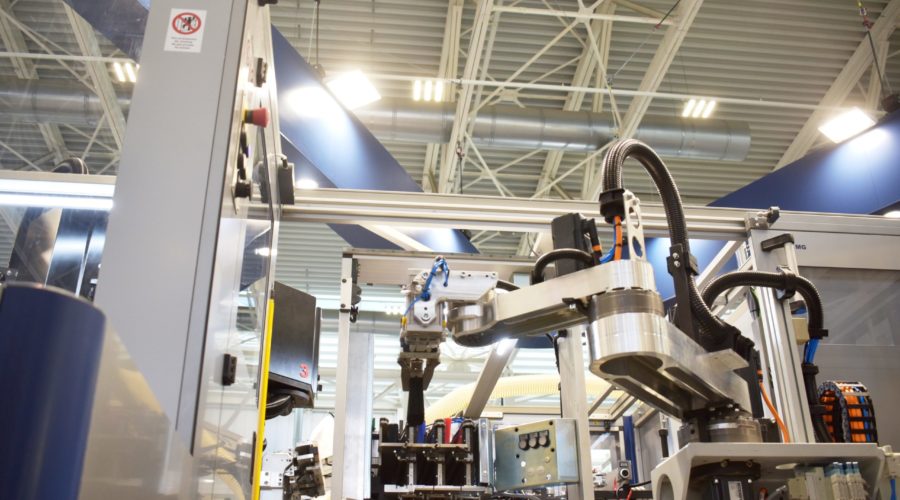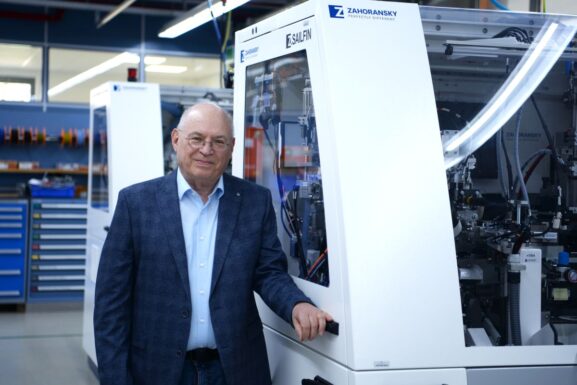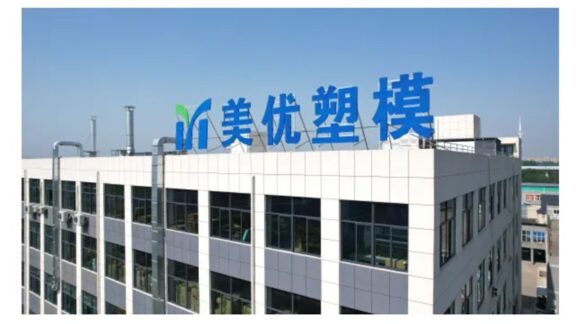World Brush Expo Recap: Borghi Booth Walkthrough

and Miguel Medrano (L to R)
On Day Two of the 2024 World Brush Expo, Miguel Medrano from Borghi USA was kind enough to give Brushware a personal tour of the expansive Borghi booth to highlight a few machines and innovations. The walkthrough started with a rundown of the two fully automatic MOON machines featured in the center of their exhibition space. The machines were set up with different configurations, one showcasing an automatic fiber feeding system and the other featuring an automated block loading feature with a magazine block feeder.

The innovative MOON features four independent carriages arranged in a circle (hence the name) and according to Medrano, the machine runs at Zero Index Time when it turns from one carriage to the next. That means when the carriages move from one station to the other, the machine movements don’t stop and so they continue as if still drilling/filling, even though it isn’t, and the result is zero stops and restarts, cutting down indexing time and wear and tear. Upon reaching the next brush block, the cycle resumes drilling and tufting.
Showcasing the automatic fiber feeding system, a robotic arm grabs the fiber bundles, removes the plastic wrap and inserts the fibers into the stock-box (Photo 3).

On the second MOON machine, it featured the automatic block loading system, Medrano explained the process saying the blocks are loaded into a hopper, then the unit runs it up on a conveyor, almost like a waterfall system, the conveyor then brings the blocks back down, where a vision inspection camera analyzes how each block is laid out on that conveyor. It sends that information to the robot. The robot then decides which angle is best and starts picking up the products according to the vision inspection result and positions them into a temporary holder. From there, the next robot picks up the blocks and automatically loads them into shuttles that carry the blocks to the next station.
Medrano noted the MOON is fully configurable to meet the needs of individual customers going from a standard machine that offers the ability to isolate to specific automation stations — where a customer is comfortable — or utilize the available stations to create a fully automated line. He noted that customers have different goals and levels of needs for automation, so Borghi specifically set up the two MOON machines to showcase the flexibility of configurations for the specific needs and budgets of each customer.
He also says the MOON has the ability to allow operators to manually load blocks, mount a magazine-loading system, or incorporate a fully automated loading unit such as the waterfall system. The machine can also be configured to have a station for adhesive sticker labelling, pad printing or laser marking the customers’ products.

For our next stop, we visited a STAR R32 (Photo 4) that was set up to demonstrate the new Eco-Fill capability that Borghi can offer. On the back side of the STAR R32, Medrano showed the machine feeding PET ribbon (Photo 5). He explained that it is similar to anchor-setting but with a plastic wedge instead of a metal wedge to secure the tufts into the brush block.

While that anchor set has normally been done with wire, Medrano says that Borghi’s Eco-Fill capability allows for anchoring with PET, which means the whole product itself can be recyclable (subject to individual country regulations) and that is key as consumer markets will continue to increase the demand for sustainable products as demographics change.
He also says it’s useful for food-grade products, cosmetic products and even sanitation purposes like a toilet brush. If you are using wire, it’s going to rust (unless using stainless steel, a more costly solution). Without the wire for an anchor, it’s more hygienic because it’s not going to rust and create that debris.
Beyond that, Medrano also says the innovation has a key benefit in that the retention on the plastic anchor set is much stronger than if you were using wire. Wire on plastic has some slippage, but the plastic-on-plastic creates friction that makes it really hard to pull out. To demonstrate the strength, Borghi set up an example of an 8 kg tension test (Photo 6) that had been on display all week. Additionally, attendees were encouraged to attempt to pull the tufts out, but it’s too strong to fail.

He says it’s a conversion kit that can be applied to any base machine that was constructed with this capability in mind.
From there, we briefly stopped by another STAR-R31 (Photo 7) set up for hairbrush production (Photo 8) that runs at 900 RPM and noted that visitors had been particularly impressed with the speed of the machine.


For our final stop, we saw the OCTOPUS-STITCH machine (Photo 9) which can produce nine mops per minute. Medrano noted this machine was the higher-end mop production machine of three that Borghi had on display at the Expo. The machine sews with a chain stitch method, and he showed the construction of the mop head that has a mesh band that goes in the middle where you can incorporate a label system for the product with company logo and bar code or QR code. The innovation is that the stitching is secured into the headband by fusing them together via a sonic welder, which allows for continuous production without having to change out a bobbin.

He says the machine chain stitches with a three-millimeter step, that way it holds as many strands of mop materials as possible to create more strength. On each end of the band, it is sonic welded to create even more strength for the mop head (Photo 10). The flaps left over are clamped in use, so they are not visible.


At the end of the tour, we spoke about the World Brush Expo. Medrano was enthusiastic about the show saying, “It’s an amazing event for our industry to showcase technology and materials supply! It’s my first show and I feel it creates enormous value for everyone involved.
Overall, for the whole show, we’ve received really positive feedback. From what I’ve heard, the location of being in Italy has been well-received. Having Bologna as the city is good, it has its own historical significance and sightseeing, but it’s also one of the major train stations where the people that want to stay after show can just grab the train and go visit Venice, Florence or Rome or any major city in Italy.”
From the perspective of Borghi and engaging with attendees, Medrano was pleased with the presence saying, “I didn’t know the booth was going to be this large. The fact that we can welcome the attendees that come in our booth, show them the array of technology Borghi can offer, showing them what’s new and we can go to the bar, grab an espresso or glass of prosecco, and then we have tables where we can continue to discuss manufacturing technology and needs in more detail, it’s phenomenal and the attendees really appreciate that. They get to see the technology we have and then have a sit down to just recap and have the opportunity to ask further questions, which is a great way to connect. We also have our private meeting rooms, which have TVs with all the videos of the machines where we can have a private conversation without all of the show noise and get more in-depth into the technology.”
From Borghi’s viewpoint, the World Brush Expo overall was a major success for the brush industry and based on feedback throughout the show it seems the attendees and exhibitors felt the same. Borghi believes in-person events of this scale are key to the industry and supports the concept of a follow-up edition in four years.
To learn more about Borghi, please visit www.borghi.com.



